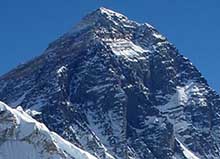Ultralight Gear Briefing
'Ultralight' is used so often these days (every outdoor magazine, every catalogue, every website) that it seems in danger of becoming just another buzz-word. Where 'Lightweight' would have done at one time, it has to be 'Ultralight' now. At PHD we ought to know - we do it ourselves.
So is there any meaning left in it? Certainly, as long you accept that it is a relative word.
At its simplest Ultralight means lighter than the previous lightweight gear of that kind (sleeping bags, tents, ropes, whatever). It's a relative classification because it's bound to be temporary – technology moves on. When I made the first Lightline sleeping bag at Mountain Equipment and showed it to the outdoor trade (longer ago than I care to mention), it was met with doubt and derision. A bag with only one pound (450gm) of down in it? Who would want such a thing? A generation later people are happily using bags with less than half that downfill and with fabrics so light that the whole package weighs less than 450gm. When will it end? When the human race stops having new ideas (and the means to implement them).
At a more complex and perhaps more important level Ultralight is a kind of statement of intent, which makes the classification highly subjective and relative to your objectives, to your experience, to your expectations, etc. No one needs to be told that Ultralight means something very different at the North Pole and on the Pennine Way. But there are wide variations too in what people expect from their gear. For example, adventure racers have a totally different take on comfort to most people and often make do with gear far too light for an ordinary backpacking trip. Same place, same temperature, but very different views of Ultralight.
Some examples:
- Adventure Racers: Some years ago PHD supplied Minimus sleeping bags to a highly successful Adventure Racing Team, who told us later that they were wonderfully light to carry, but they hadn't had time to sleep in them.
- Marathon Race and Marathon Journey: Early in 2006 Rosie Swale-Pope was crossing Alaska at the same time as the Arctic Ultra Race was being held in the Yukon. Rosie had a PHD Mustagh Jacket (now discontinued) weighing 1030gm, while Stuart Gillett used our Yukon Jacket at just 440gm. The difference? Rosie was running around the world by herself (Siberian winter before Alaskan winter) solo with no backup team: her gear had to be light, but survival came first. Stuart was trying to win a race, a very tough one across miles of arctic terrain, but still a race where lightness was paramount (he came second, the fastest European ever for the course). Both jackets are as light as we could make for the job, yet neither of them would be called Ultralight by someone doing the Marathon Des Sables in the Sahara or a Mountain Marathon in the UK.
- Himalayan Ultralight: We have supplied an expedition to one of the harder 8000m peaks with sleeping bags containing a mere 500gm of down. Not to be generally recommended: the margin for error is considerably reduced. But they were experienced enough to know what they were asking for and what the risks were (and they made it without mishap).
So you can look at Ultralight in two ways. Either 'the latest and lightest' (the manufacturers' definition) or the intentional trimming of your margins of comfort/survival in order to minimise your load (the users' meaning).
As manufacturers PHD simply use Ultralight as the heading for our lightest gear. But most of the rest of our range is built on the same principle, as light as we can make it for progressively more extreme environments. The exception is the Omega gear, which is designed for bomb-proof protection first and foremost, for which heavier fabrics and constructions are necessary.
A note on Sleeping Bags
It is very PC at the moment to emphasise the benefits of an ultralight pack while skipping over the value of warmth and comfort. It's always a trade-off. But make no mistake a night's sleep is worth a lot unless a) you are in a race or b) you are very hardy and don't care. And if what you're doing is big and remote, trim your sleeping gear to suit your plans by all means, but be very aware of what you're risking in terms of rest and ultimately of survival.
General Advice
If you are well experienced, whether as a mountaineer, a marathon racer, or a backpacker, you can make your own judgements about the weight/warmth balance of your gear.
If you are relatively inexperienced and you want to move into ultralight gear for the first time, then there are a few common-sense rules of thumb:
- Get advice from people who have the experience (e.g. people who have done the same trail/marathon, camped in the same conditions, gone ultralight on a similar mountain route, etc). Websites may help.
- Assess how you will deal with bad weather or an unexpected drop in temperature.
- Have you enough margin? No need to say that the more remote your trip the more important this is, but even in British hills this is a must.
- Decide how far you personally are prepared to go in the compromise between weight and comfort. People differ greatly on this, but ultimately it is your individual choice.




















